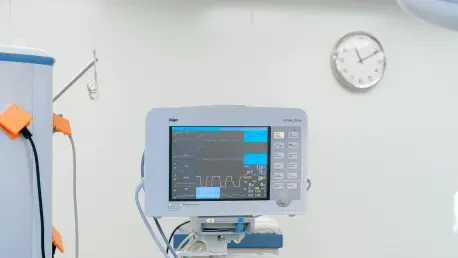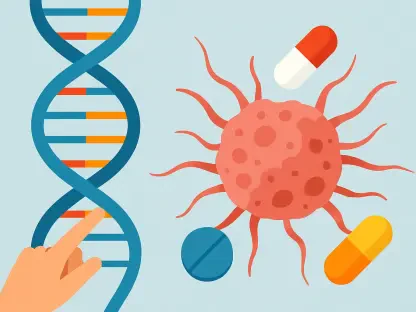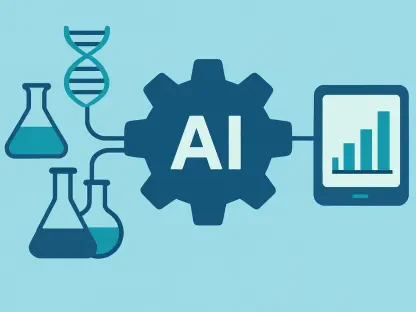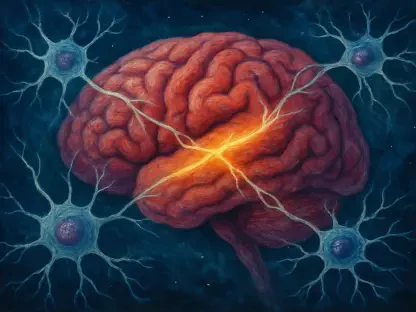In the incredibly intricate world of medical diagnostics, artificial intelligence has made groundbreaking strides, especially concerning liver diseases such as biliary atresia (BA). This rare and severe condition affects infants, and delays in diagnosis can lead to significant liver damage. A recent study of AI-based screening methods conducted in various European countries uncovers myriad approaches to enhancing early diagnosis. The outcomes of these initiatives offer a promising glimpse into AI’s potential to revolutionize pediatric healthcare.
Deciphering AI Approaches in Biliary Atresia Diagnostics
AI-powered technologies in BA screening are gaining traction, marked by their advanced capabilities and pivotal role in transforming diagnosis. The core principle behind these technologies involves leveraging machine learning and image recognition algorithms to analyze stool images, a crucial early indicator of the disease. By automating and expediting the diagnostic process, AI systems seek to significantly improve outcomes for infants, serving as an indispensable tool within the healthcare landscape.
The significance of AI in enhancing early diagnosis lies in its ability to combine precision with speed, addressing the crucial need for swift intervention in BA cases. As countries like Switzerland and Germany integrate these technologies into national health frameworks, the potential for AI to impact treatment outcomes becomes increasingly evident. This forward-thinking approach sets a benchmark in the field of pediatric liver disease management.
Key Features of AI Technologies in BA Screening
AI-Powered Image Analysis for Stool Examination
One of the forefront applications of AI in BA screening is stool image analysis. This involves advanced algorithms trained to detect anomalies in stool color and composition, a primary indicator of the disease. The accuracy metrics of these systems demonstrate promising potential, often outperforming traditional manual methods in identifying affected infants. Such AI-driven analysis reduces dependency on subjective assessments, thereby enhancing diagnostic reliability.
Digital Health Applications for Early Diagnosis
The development and application of digital health apps further revolutionize the diagnostic landscape by providing user-friendly platforms for early disease detection. These apps leverage AI to guide users—primarily parents and healthcare providers—through interactive interfaces, fostering proactive engagement. The real-world performance of these applications illustrates their growing influence, contributing to early diagnosis and fostering positive patient outcomes.
Innovations and Emerging Trends in BA AI Screening
Recent shifts in AI screening technologies for BA underscore the expanding arena of digital transformation in healthcare practices. Emerging trends include the collaboration between AI and traditional diagnostic methods, offering comprehensive disease management solutions. The hybrid models proposed in certain European countries illustrate this shift, as policymakers recognize AI’s potential in complementing existing frameworks.
As research and development continue to evolve, AI-driven tools emerge as critical assets in diagnosing BA, offering scalability and greater accessibility. The success of initiatives in countries like Italy and Germany sheds light on the growing importance of integrating these technologies into national healthcare strategies, paving the way for enhanced, inclusive screening approaches.
Real-World Successes and Practical Deployments
The successful implementation of AI-enhanced BA screening technologies is evident through several notable case studies in pediatric healthcare. In Switzerland, the incorporation of AI-based tools in national programs has dramatically improved diagnostic timelines. France’s innovative advocacy initiatives have further driven this technological adoption, with profound effects on BA-related health outcomes.
Unique use cases highlight the application of tools like AI-based stool image analysis and digital apps, underscoring the positive impact on patient care. These instances represent transformative shifts in both policy and practice, testament to the growing acceptance and efficacy of AI technologies.
Challenges Encountered in AI Adoption for BA Screening
Despite the impressive advancements, several challenges remain in the widespread adoption of AI-based screenings for BA. Technical hurdles, such as the constant need for dataset accuracy and refinement, present ongoing issues for system developers. Additionally, administrative obstacles, including regulatory barriers and market entry challenges, impede efforts for more extensive implementation.
Progress has been noted in addressing these limitations, with efforts underway to standardize AI tools across various healthcare systems. Continuous development and cross-border collaboration are essential to overcoming these challenges, ensuring wider acceptance and integration of AI in BA diagnostics.
Future Projections for AI in Biliary Atresia Diagnostics
Looking ahead, AI technologies are poised for monumental growth in BA screening, with potential breakthroughs on the horizon. Enhancing AI models and ensuring interoperability with existing systems are expected to streamline processes, offering improved accuracy and reduced diagnostic timeframes. The continued evolution of these technologies promises long-term impacts on pediatric liver diagnostics, with likely wider adoption across different healthcare infrastructures.
The future of AI in BA screening will likely focus on creating versatile solutions that enhance diagnostic precision, ultimately leading to better health outcomes for infants. This forward-looking perspective emphasizes the imperative to cultivate innovation and adapt to technological changes swiftly and effectively.
Summary and Final Thoughts
AI technologies applied to biliary atresia screening have marked a significant turning point in pediatric liver disease diagnostics, holding transformative potential. The review illustrates current applications alongside potential advancements within a broader healthcare framework. Although challenges abound, AI’s promise in revolutionizing early diagnosis remains steadfast, illustrating its critical role in shaping the future of medical care.
In conclusion, the technological landscape for diagnosing BA has witnessed substantial developments through the integration of AI tools, digital health applications, and traditional methodologies. Policymakers and healthcare providers must now work collaboratively to cement AI’s place in national strategies, potentially mitigating BA-related infant mortality across Europe. By uniting efforts, nations stand to gain from these innovations, fostering an era of improved diagnosis and treatment outcomes for those affected by biliary atresia.









